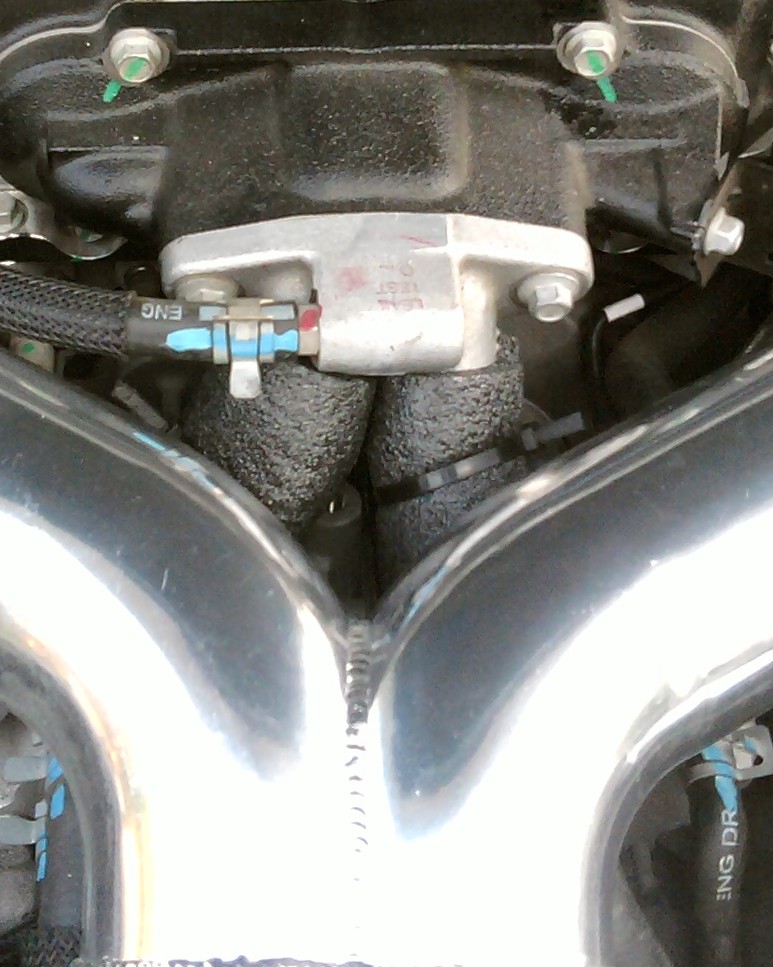In a water to air heat exchanger cooling system as used on the Cadillac STS-V and CTS-V, ambient air coming into the front of the Cadillac is used to cool the intercooler coolant. The coolant is then pumped through the actual intercooler to cool the air charge entering the manifold. Intuitively we expect changes in ambient air to change the equilibrium point of the intercooler cooling system. This is because the colder the ambient air over the heat exchanger, the better the heat exchanger works and so the lower the expected intercooler temps will be. Today’s test explores to what degree ambient temp changes impact IAT2s.
The test today and the prior data shown are both for the current intercooler setup: Updated intercooler hoses, retest hot S3TC heat exchanger
OEM Heat Exchanger + S3TC additional heat exchanger and hoses. Fluid capacity ~4.6 quarts.
I experimented with the Mityvac system and repulled a vacuum on the intercooler coolant, pulling coolant along with the vacuum, and refilled it. But the hardware is unchanged. The test is a 20 minute loop at highway speeds, with one or more acceleration runs along the way to demonstrate intercooler heat up and cool down times. These show as spikes on the graph.

The graph shows IAT2 temps, which is the incoming air temperature after the supercharger, on a prior test day that averaged 69F ambient temp, and today with 84F ambient temp, or 15F higher. There are 4 lines on this graph. The dark blue is IAT2 today, and the light blue is IAT1, or air coming into the engine intake, today. Dark red is IAT2 on the cooler day, and salmon (pink) is IAT1 on the cooler day.
What the comparison appears to show is that when ambient temps are 15.3F warmer (avg 84.8F vs 69.5F), air coming into the engine (IAT1) is 15F warmer (avg 94.2F vs 79.2F), and air out of the intercooler is 11.2F warmer (avg 124.7F vs 113.5F). Knowing that ambient temps flow into the intake as IAT1 and on through the supercharger to become IAT2, we might have predicted that a 15F ambient delta would resolve to a 11.2F IAT2 delta. However, that’s why we test, to find out what happens. In general an increase of 1F ambient leads to 1F IAT2 leads to 0.8F IAT2.
I also note that IAT1 averages 10F above ambient, and IAT2 tends to be 30-32F above IAT1

Same trend for this dataset of about 3 sec after acceleration starts to IAT2 begins to rise.
Let’s think about that for a bit —
| Item |
Qty |
Units |
| Pipe ID |
0.75 |
pipe diameter in inches |
| System loop: |
4.00 |
OEM HX To S3TC |
|
4.00 |
S3TC to OEM hookup |
|
2.00 |
width of OEM HX |
|
2.17 |
Width of S3TC HX |
|
0.67 |
hose to factory pipe |
|
2.50 |
Factory Piping |
|
2.50 |
Factory Piping |
| Total System Loop: |
17.83 |
Feet long |
| Obs Circuit |
3.20 |
sec |
| Result Velocity |
5.6 |
feet/second |
| GPM |
7.7 |
gpm |
That if the coolant is doing a 3.2 sec loop through the system, and the system is ~18 feet long, then the fluid must be moving at 5.6 feet/second, and that the pump must be putting out 7.7 gpm. The pump is rated at 8 gpm against no pressure, so that seems hard to believe. Intercooler cooling system pressure & flow







